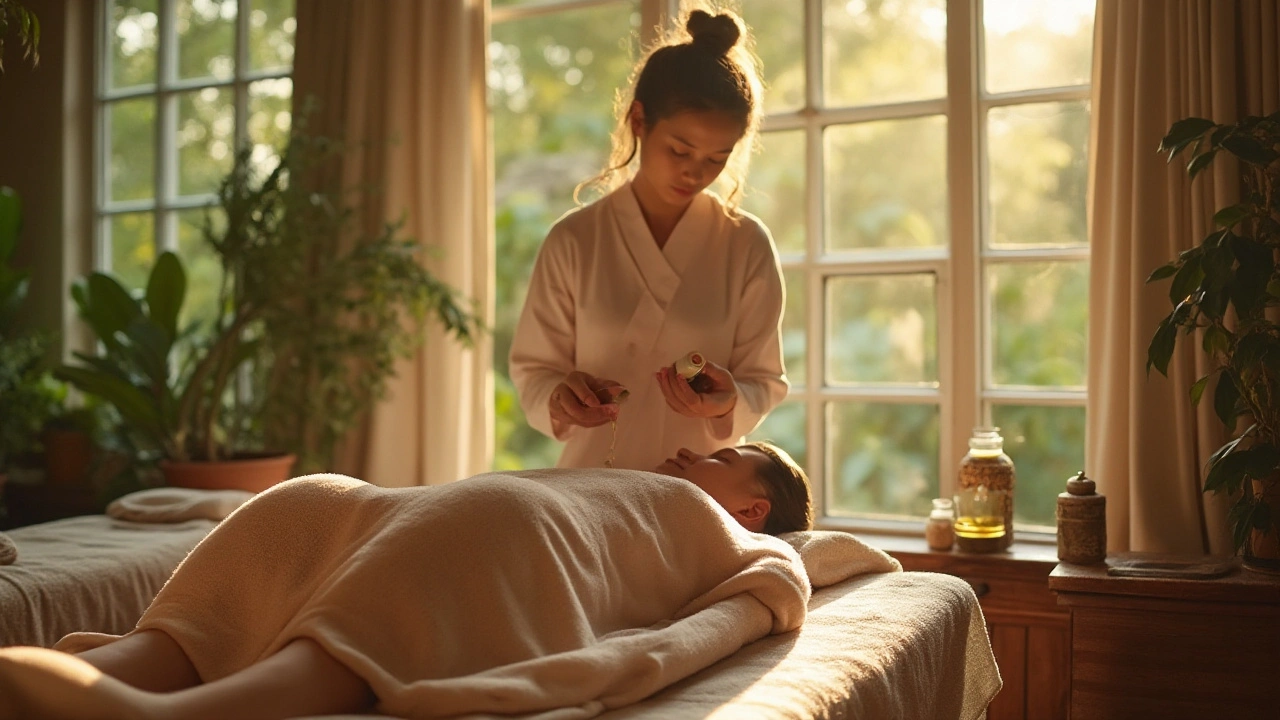Ayurveda: Simple Ayurvedic Massage & Daily Routines
Ayurveda is roughly 5,000 years old and focuses on small daily habits that change how you feel. You don’t need exotic herbs or long retreats to get results—just a few practical moves, the right oil, and a short routine done regularly. If you want massage tips tied to real daily habits, this page gives straightforward steps you can use at home or check for local Ayurvedic therapists.
Quick Self-Massage (Abhyanga) You Can Do Today
Abhyanga is a full-body oil massage you can do in 10–20 minutes. Warm the oil slightly, sit or stand with a towel under you, and work from the extremities toward the heart. Start with the feet: stroke up the calves and thighs, then use circular pushes on the joints (ankles, knees, shoulders). Use long, steady strokes on the arms and torso. On the neck and scalp, use light circular motions. Finish by wrapping for 5–10 minutes or jumping into a warm shower.
Which oil? Use sesame or medicated oils if you want grounding and deep warmth. For lighter, cooling effects pick coconut or sunflower oil. If you know your dosha: Vata types usually do better with warm sesame, Pitta with cooling sunflower or coconut, Kapha with lighter oils and shorter sessions. If you’re unsure, start with a neutral blend (sesame mixed with a little coconut) and test a small patch of skin first.
Benefits you can expect soon: better sleep, calmer nerves, and softer skin. After a week of nightly abhyanga many people report falling asleep faster and waking with less stiffness.
Daily Ayurvedic Habits That Actually Work
Don’t overcomplicate your routine. A simple daily plan: first thing, drink a glass of warm water; scrape your tongue once; do 10–15 minutes of abhyanga or light stretching; eat your largest meal at midday when digestion is strongest; go to bed earlier—aim for a consistent sleep time. These moves improve digestion, reduce bloating, and help steady your mood.
Small safety notes: avoid heavy oil massage if you have a fever, infected skin, or open wounds. People on blood thinners or with serious medical conditions should check with their doctor first. If a joint or muscle feels sharp pain during massage, stop and get a professional assessment.
If you want a therapist, look for someone trained in Ayurvedic oil techniques and who asks about your daily habits and medical history. A good practitioner will adapt oil blends and pressure to your current needs—not just follow a menu of treatments.
Try these tips for a week and notice one small change—a better night’s sleep, easier mornings, or less neck stiffness. Ayurveda in practice is about steady, simple habits. Start small, keep it consistent, and tweak what feels off. If you want, scan our articles on allied therapies and massage styles to find techniques that pair well with Ayurvedic routines.

Enhance Your Mental Well-Being with Ayurvedic Massage Techniques
Ayurvedic massage is not just a luxurious therapy but also a profound method to enhance mental health. By focusing on balancing the body's energies, it offers a holistic approach to alleviating stress, anxiety, and depression. This ancient practice invigorates the mind, fosters relaxation, and promotes peace. Discover how it benefits mental well-being and tips for integrating it into your wellness routine.
Categories
- Health and Wellness (148)
- Alternative Therapies (86)
- Massage Therapy (40)
- Travel and Culture (15)
- Beauty and Skincare (9)
- Holistic Health (8)
- Health and Fitness (5)
- Spirituality (5)
- Other (2)
- Personal Development (2)



